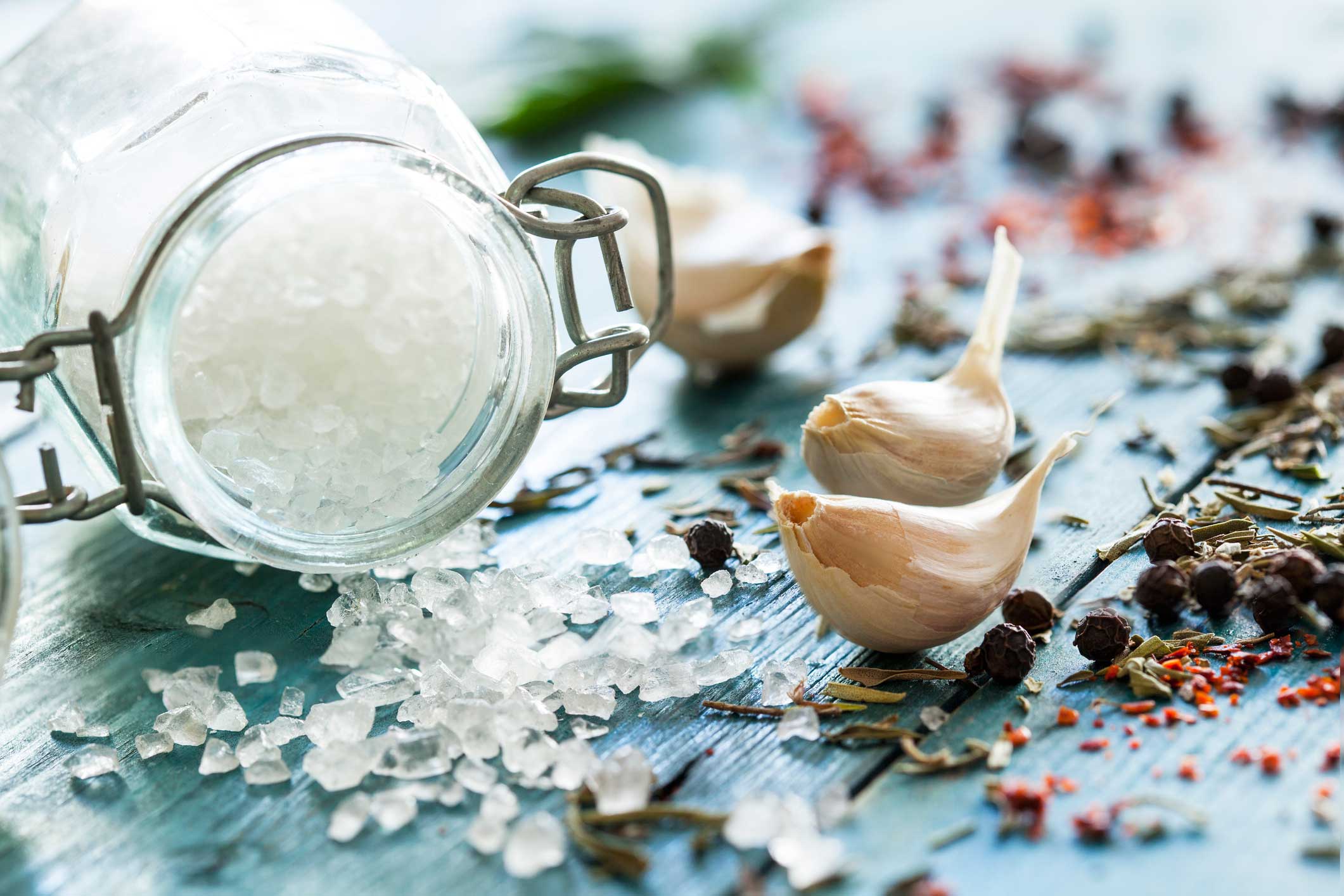 Many ingredients besides salt can give dishes a full-bodied, savory flavor. The following tips will help you transition to a lower sodium diet without sacrificing flavor by creating what is called umami, the “fifth taste” that suppresses bitter compounds (in foods like kale and broccoli), heightens the existing flavor of dishes and increases the perception of saltiness.
Many ingredients besides salt can give dishes a full-bodied, savory flavor. The following tips will help you transition to a lower sodium diet without sacrificing flavor by creating what is called umami, the “fifth taste” that suppresses bitter compounds (in foods like kale and broccoli), heightens the existing flavor of dishes and increases the perception of saltiness.
- Cook with fresh or dried mushrooms. Mushrooms (particularly shitakes and morels) are rich in amino acids (essential for developing umami) that create more complex low-sodium broths for stews soups or braising liquids.
- Add fresh or dried chili peppers, white pepper or smoked paprika. The piquancy of these seasonings stimulates the brain’s pleasure centers in much the same way as sodium. So, we can actually trick the brain into thinking a meal is higher in sodium by using chilies and other warming spices.
- Flavor dishes with aromatic vegetables and herbs: onions, shallots, leeks, celery, garlic and rosemary.
- Season with fermented condiments: Worcestershire sauce, low-sodium tamari, miso and anchovy paste to give dishes a bold savory flavor with less sodium. Worcestershire sauce, for example, has 65 milligrams of sodium per teaspoon which is significantly less than 2,300 mg in one teaspoon of salt.
- Add kombu (a type of seaweed) to soups and stews to add depth of flavor and help dried beans cook evenly.
- Sprinkle dishes with nutritional yeast instead of cheese. This low-calorie condiment has just 5 milligrams of sodium in one tablespoon and is packed with essential amino acids and B-vitamins. Nutritional yeast will simulate “cheesiness” in risotto, mashed potatoes, on popcorn and roasted vegetables. It can also be used to enhance the flavor of, and thicken, liquids.
- Shake dried seaweed such as furikake, nori or dulse flakes on salads and side dishes to add Asian flare with less sodium.
- Use tomato paste or sun-dried tomatoes to enhance the flavor of Italian-style dishes (one handful of chopped sun-dried tomatoes adds only 120-300 milligrams of sodium).
- Look for powdered tomatoes and powdered mushrooms which are convenient ways to add umami to sauces, omelets, stews, sautéed greens, bean dips, bread and soups.
Use salt in moderation. Choose a flaky or larger grain salt to control how much you add. Flaky salt dissolves rapidly on the tongue creating bold flavor so you will add less. The best bang for your buck for flavor is alberger salt, a flaky salt shaped like tiny, hollow pyramids. Another option is to buy salt with a grain size similar to whole peppercorns and combine it with herbs and spices in a pepper grinder.
A note about salt: Don’t pay extra money for Himalayan, pink or sea salts because they are not healthier for you. These salts have roughly the same amount of sodium as traditional iodized table salt. The attractive hue comes from an array of minerals that are beneficial to our health but the amount you get from a pinch of salt is minute, so there is truly no advantage to using them instead of table salt.
Brenda Viens is a Community Life Skills Dietitian for Backus Hospital and Thames Valley Council for Community Action. Email her at Brenda.Viens@hhchealth.org. Have a nutrition question for Brenda? Email her at Brenda.Viens@hhchealth.org.

